Fancy Clone Development Process In Detail
home / blog / Fancy Clone Development Process In Detail
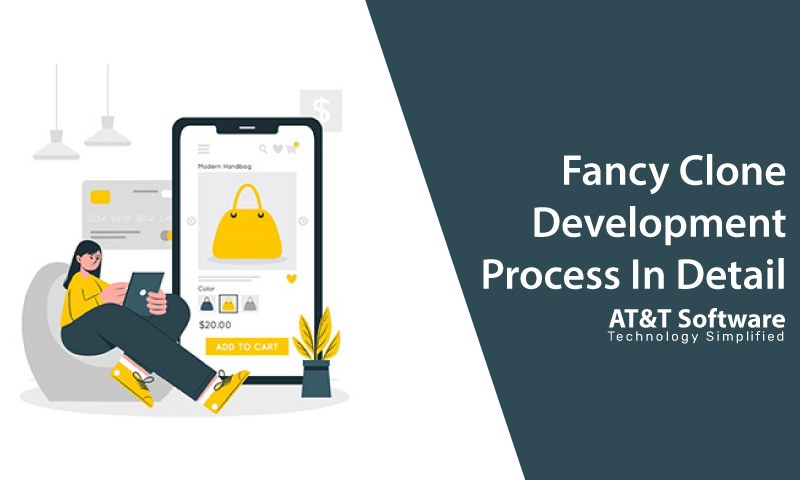
The massive growth of the eCommerce industry has made it necessary for many businesses to go digital. This was further reinstated during the Coronavirus pandemic. Today, the eCommerce industry is a multi-billion dollar industry, and the demand for developing applications and web platforms for digital commerce and trade is nearly a phenomenon. This sums up the requirement for creating a Fancy Clone.
Step 1: Strategizing & Planning
For developing a Fancy Clone, the first this you need to do is to jot down the business requirements. As discussed before, the company must clearly explain its point of view to the app developer. It is essential to be involved in the app development process with your knowledge and ideation.
Step 2: Front-End Design
The app developer will have different templates and ideas for your app’s front-end design. And the design is customizable so that the company can share their ideas; tweak it a little bit, here and there, to give it their unique flavor and taste. Developers certainly have in mind different ideas; it just needs guidance in the right direction.
Step 3: Back-End Design
Another critical part of the app development process is the back-end design. The app developer will be developing the codes that will be used to power the back-end functionalities. The latest technologies aided the back-end development to make the Fancy Clone even fancier.
Step 4: Quality Analysis
As the front and back-end development comes to a close, the entire app development process also nears its end. With the app being developed, the company needs to run a few tests and quality analyses to check if every function and feature is working as it is supposed.
Step 5: Launch
After everything has been checked and rechecked a few times, it should be ready for launch. If changes are required, fix them immediately, and go through the quality analyses before launching it into the public sphere.
Features To Include On A Fancy Clone
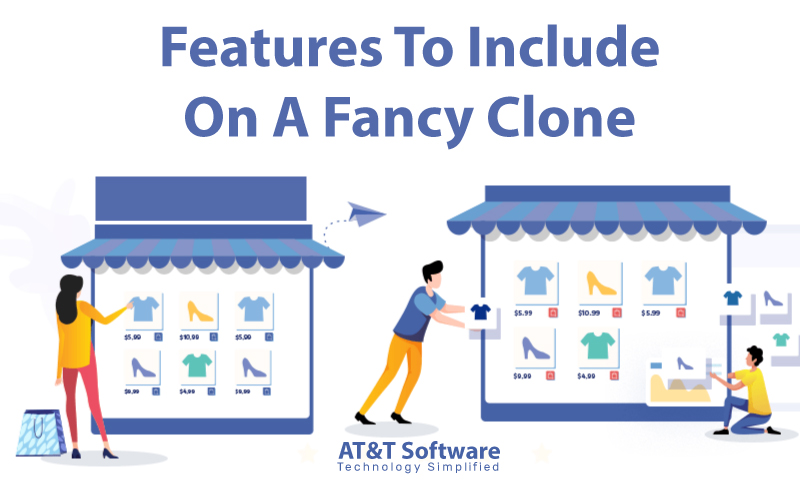
Now that we have covered the Fancy Clone app development process, it is time to look deeper. The features included on an eCommerce platform can be so many that the features stacks selection itself can amount upto an entire article. To be fair, an eCommerce platform has at least three or more participants involved.
Each of the participants is provided with their panels, and these panels consist of features that are important for each individual to fulfill their purpose. Typically, an eCommerce application like this has three prominent participants. These are the customer or the user, the merchant, and the admin.
Fancy Clone User App Features
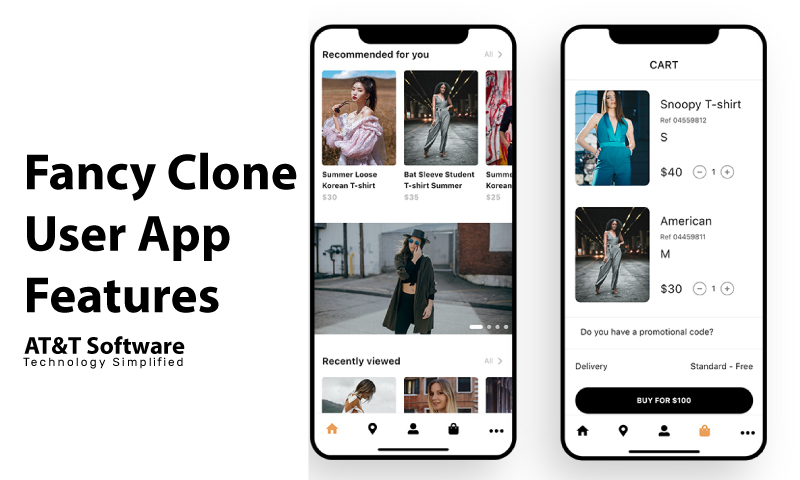
The customer or the user on a Fancy Clone app joins the app platform to purchase certain products that they need. In this way, they help the business grow almost naturally. The user app features are selected on the same spectrum of providing the utmost experience to the customer in a simple online purchase.
Quick Social Media Sign-Up
To acquire any services offered by the platform, the customer needs to register initially. During the registration process, the user has to get their email i.d, phone number, or social media handle for linking it to the app’s user i.d. Then, the user will receive an OTP or other confirmation for connecting the i.d or number. They will also be required to add a password to protect their account, as the user will have to add other credentials worth some value.
Categorized Inventory
The Fancy Clone has a categorized inventory, which contains all the platform’s products up for sale. As eCommerce platforms offer multi-faceted services and products, they must sort the different products into different categories, making it easier for the customer to find things from the list.
Easy Search
Apart from the category, the user can also manually search for items they need to buy. They can simply type the name of the product or item or the brand or seller to close in on their search results. The app may also contain a voice search feature, so the user doesn’t need to write things down. The voice search feature has increasingly been implemented onto most modern-day eCommerce platforms.
Shopping Cart
As the user stumbles upon something worth buying on the Fancy Clone, they can just add it to the shopping cart. The shopping cart will store every item that the user wishes to buy. The user can check the price breakdown for things and other delivery details and decide whether to proceed to checkout.
Multi Payment Option
If the user decides to proceed to checkout, they will be asked to enter their bank account details if they haven’t done it already; once the user is ready to purchase the product, they can select from one of the available payment methods. Then, as they make the payment, the amount will automatically be deducted from the user’s bank account.
Notifications
Notifications are an integral part of Fancy Clone or any modern-day application. Present-day applications depend a lot on notifications to generate an immediate response from their users. Apart from this, notifications are also used to send info that might be useful to the customer.
Multi-Lingual Support
There can be no debate that an eCommerce platform needs to be multi-lingual to understand what its audiences want to convey. In addition, customers can have a lot of queries that the customer support team needs to deal with. This is why the platform must be multi-lingual to be able to communicate simply.
Account Settings
At the beginning of the customer’s journey on the platform, they are asked to create an account; during the registration process. This account contains all the info, personal credentials provided by the user at registration, and even their bank account details. Under the account settings feature, the customer can change or manipulate some of this info.
Fancy Clone Merchant App Features
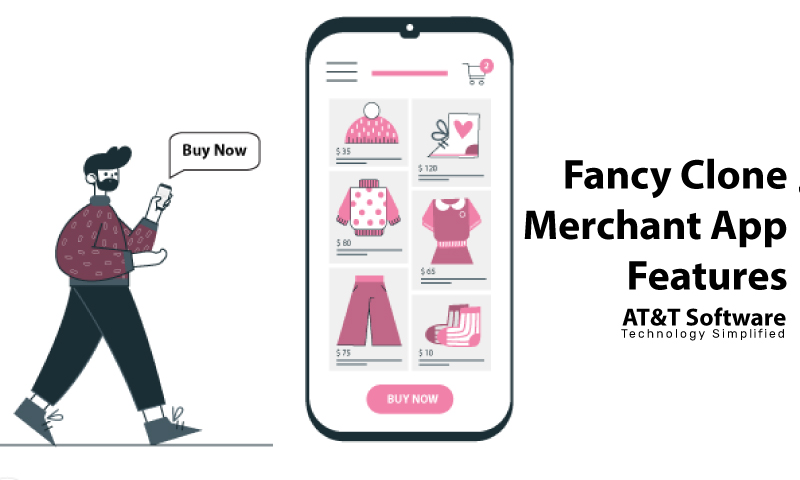
The Fancy Clone has a separate panel for the merchant. This panel contains features significant to the merchant’s functions over the platform. eCommerce applications are one of the best possible options for vendors and retailers to gain a vast reach through the online medium. This has been further proved by the trend of digitalization that almost converted all business ventures to have an alternative.
Inventory Control
The merchant is the supplier or provider of the platform. An eCommerce platform is certainly not an average marketplace, hosting thousands of vendors, retailed, and other business fronts. Each of these businesses brings its list of products to the table. The merchants are given control of their inventories and inform the app of any significant changes.
Cart Management
Fancy Clone allows the merchant to check the cart of the audience. When their audience adds an item to the cart, it automatically gets notified to the merchant. Similarly, when a customer abandons a cart, that too gets informed. The merchant or admin could send a push notification to remind the user of their cart.
Coupons
The merchant has the allowance to add coupons or offers to their product to boost their sale. These coupons and offers are designed attractively that the customer may not be able to refuse or even help them buy a specific product.
Buyer Notifications
Every time a buyer places an order request with any vendors or merchants on the platform, they are immediately notified of the developments. Therefore, the merchant must respond to the order request as soon as possible. After that, they accept or decline however they please.
History
Whenever the orders are placed, this event gets stored under the order history of the Fancy Clone. Each merchant will have their order history where every data linked with any order that the store or vendor has been involved with will be duly recorded. The merchant can access this info anytime.
Payment
As soon as the order gets successfully processed, the buyer will be asked to. Then, the app will automatically deduct the amount from the customer’s account and send the due amount to the merchant.
Fancy Clone Admin Panel Features
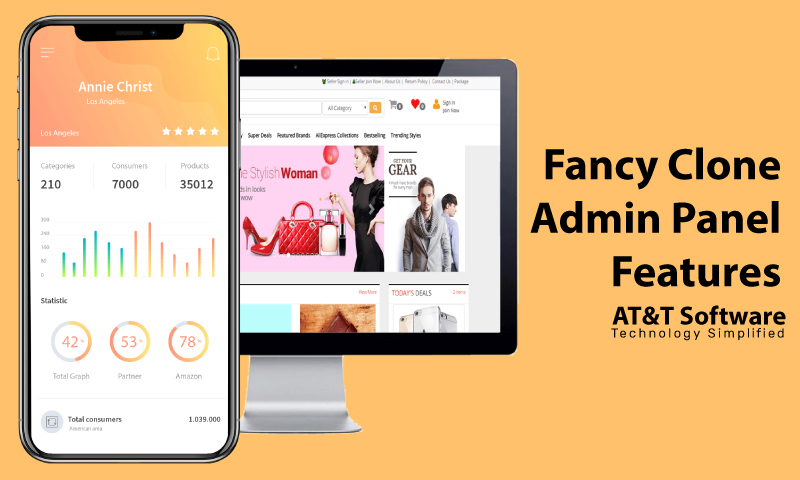
The admin panel consists of managerial features crucial to the admin’s roles and responsibilities to the Fancy Clone. The admin has to manage the whole platform, and its functionalities and features reflect the same.
Admin Dashboard
The admin dashboard feature has gained prominence. It contains most of the features the admin requires. It also features different stats and analyses that the admin had to figure out. The features on the admin dashboard are customizable.
Manage Products
The admin has to manage all products posted over the Fancy Clone. First, they have to approve the products before it gets featured on the platform. Then, they can add or remove products following the company protocols.
Manage Stores
Similarly, the admin is also responsible for managing the stores, vendors, and merchants joining the platform. For example, the admin has to verify the merchant before letting them continue doing business on the app. Similarly, they can remove merchants if they fail to follow the platform’s rules.
Order History
The admin can access the entire records of the Fancy Clone. This contains the order history, all the orders placed by users, successful ones, failed ones, and even pending ones.
Track Order
The admin has access to tracking the order. They follow the progress since the order gets approved and throughout the delivery process. The admin also remains partially involved in the payment process.
Conclusion
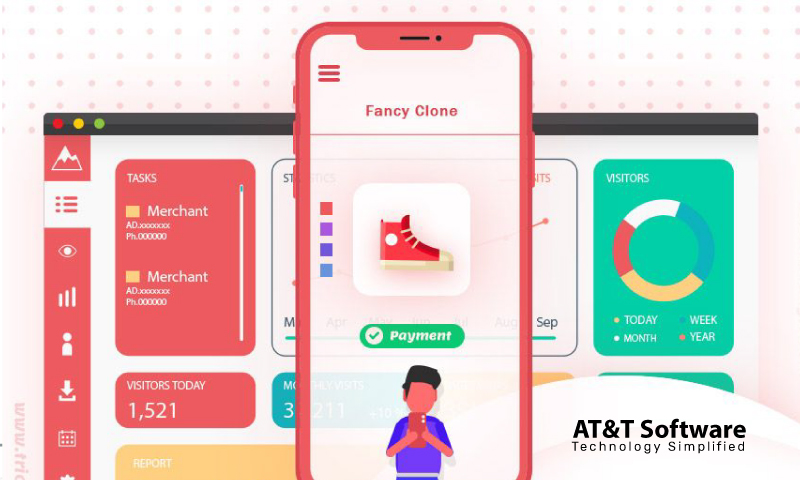
The app development process is more or less the same for every application, with changes in the features and functionalities. This is because every business has its unique needs to be implemented onto the platform. Apart from that, the app development process everything else changes according to the needs of the Fancy Clone.

I hope you enjoy reading this blog post.
Would you like to get expert advice? Schedule a Call
About Webrock Media
Webrock Media comes with an incredible team of website and mobile application developers who can customize the perfect solutions to transform your business. We think ourselves to be an ideal ‘Technology Simplified Destination’ as we know how to perfectly merge creativity and programming to build robust websites for our clients.
